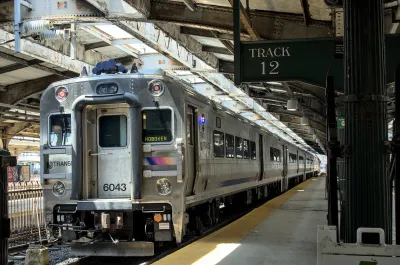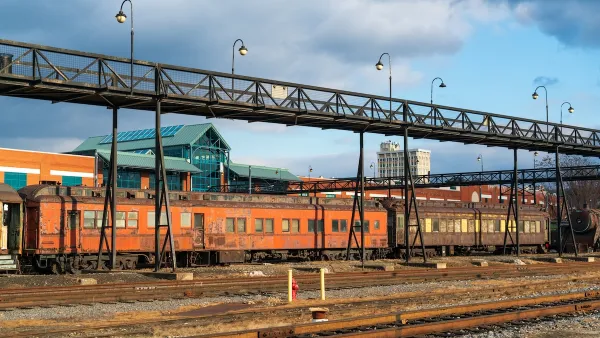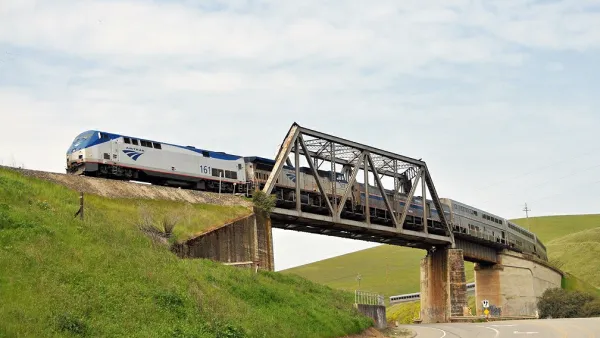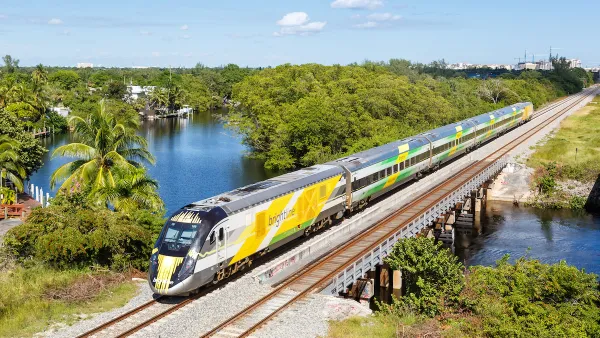The troubled agency has been canceling roughly 100 trains per week.

Writing in Curbed, Nolan Hicks takes a deep dive into New Jersey Transit’s troubled recent history, delving into the reasons why the agency has, in some cases, left passengers stranded in trains for hours — even after raising fares by 15 percent.
According to Hicks, “Two crises are unfolding simultaneously at NJ Transit.” The first, “mostly outside of NJT’s control,” is Amtrak’s failure to modernize the power grid in the Northeast Corridor, much of which NJT shares.
The second crisis is NJ Transit’s lack of resources and subsequent service cuts, with 3,400 trains canceled between January and August of this year. “Even if you subtract those that NJ Transit can pin on Amtrak, the number still stands at more than 2,300, up year-over-year by 800.”
The agency blames service interruptions on an aging fleet, but it does far less maintenance on its trains than comparable systems. Meanwhile, NJT has not added modern innovations such as elevated platforms for faster and easier boarding or electric propulsion systems that have helped systems like New York City’s MTA speed up service and reduce the time trains stop at stations. Multiple governors have promised to fund the system, only to pull back on those goals. According to Hicks, “In 2004, Trenton allocated $618 million for major projects, modernization and improvements at NJ Transit, or approximately $1 billion in today’s money. In 2024, Murphy and lawmakers allocated just $760 million for the fifth year in a row — a shortchange that adds up to $2.4 billion per decade.”
FULL STORY: Why Does NJ Transit Keep Canceling Trains?

National Parks Layoffs Will Cause Communities to Lose Billions
Thousands of essential park workers were laid off this week, just before the busy spring break season.

Retro-silient?: America’s First “Eco-burb,” The Woodlands Turns 50
A master-planned community north of Houston offers lessons on green infrastructure and resilient design, but falls short of its founder’s lofty affordability and walkability goals.

Delivering for America Plan Will Downgrade Mail Service in at Least 49.5 Percent of Zip Codes
Republican and Democrat lawmakers criticize the plan for its disproportionate negative impact on rural communities.

Test News Post 1
This is a summary

Test News Headline 46
Test for the image on the front page.

Balancing Bombs and Butterflies: How the National Guard Protects a Rare Species
The National Guard at Fort Indiantown Gap uses GIS technology and land management strategies to balance military training with conservation efforts, ensuring the survival of the rare eastern regal fritillary butterfly.
Urban Design for Planners 1: Software Tools
This six-course series explores essential urban design concepts using open source software and equips planners with the tools they need to participate fully in the urban design process.
Planning for Universal Design
Learn the tools for implementing Universal Design in planning regulations.
EMC Planning Group, Inc.
Planetizen
Planetizen
Mpact (formerly Rail~Volution)
Great Falls Development Authority, Inc.
HUDs Office of Policy Development and Research
NYU Wagner Graduate School of Public Service





























